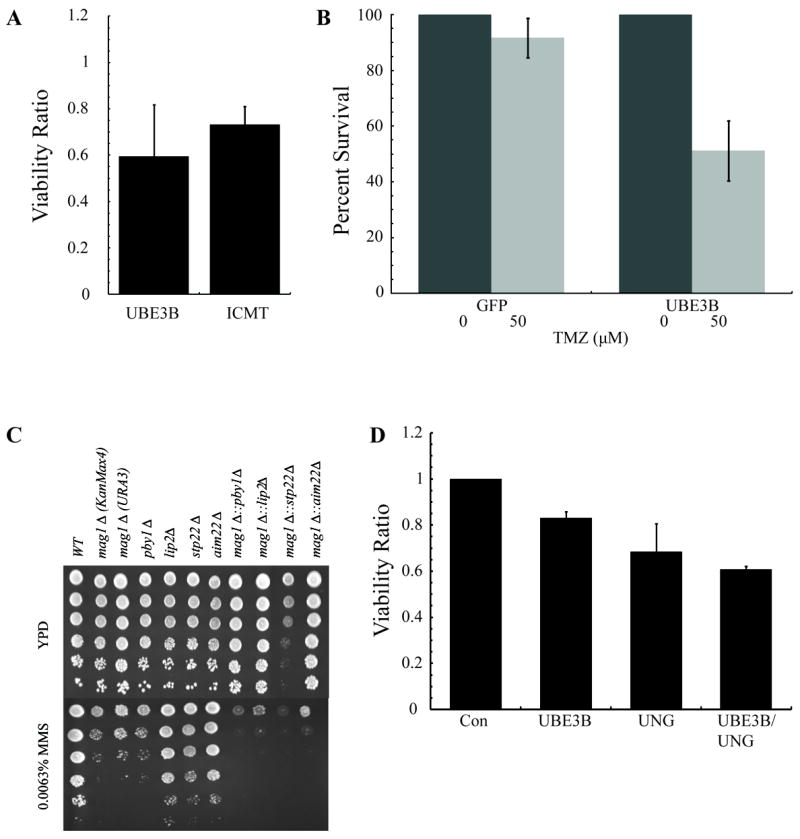Figure 6.

Knockout or depletion of protein modification genes sensitizes S. cerevisiae and human glioma cells to alkylating agents. (A) Knockdown of protein modification genes sensitize glioma cells to TMZ. The T98G cell lines with protein modification gene knockdown were treated with 1mm TMZ to determine sensitivity by an MTS assay 48 hours after exposure. The mean viability ratio of three independent experiments is plotted ± SEM. (B) Knockdown of UBE3B sensitizes glioma cells to TMZ at clinically achievable doses. The T98G/UBE3B-KD cell line was treated with 50μM of TMZ and survival was determined by CyQuant assay 9 days after exposure. The percent survival of two independent experiments is plotted ± SEM. (C) A dilution series of yeast single and double knockouts were tested in YPD and YPD + MMS containing media. (D) Sensitivity to TMZ via knockdown of UNG and UBE3B are not independent. T98G cells transiently transfected with siRNA that was scrambled, targeting UNG, UBE3B or both UNG and UBE3B. Forty-eight hours after transfection cells were seeded to determine sensitivity to TMZ by MTS assay. Both individual knockdowns of UNG and UBE3B sensitized glioma cells to TMZ, but dual knockdown did not have a greater effect than either single knockdown, suggesting an epistatic relationship between UNG and UBE3B.
